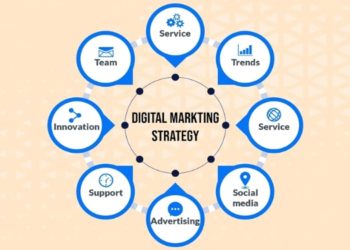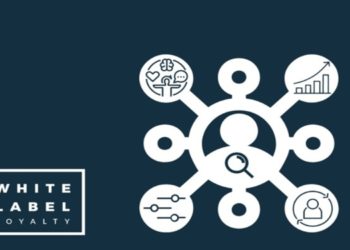Across Britain and Ireland, from Belfast’s integrated schools to Birmingham’s academies, educators face an unprecedented transformation. Artificial intelligence isn’t coming to education—it’s already here, fundamentally changing how teachers plan lessons, assess progress, and engage students. Yet while students in Dublin and Manchester naturally embrace AI tools, many educators feel overwhelmed by the pace of change. The gap between technological possibility and classroom reality has never been wider, making quality educational resources and proper AI training not just helpful but essential for modern teaching.
The statistics paint a compelling picture: 82% of UK teachers report using some form of digital resources daily, yet only 23% feel confident integrating AI tools into their pedagogy. In Ireland, where the Digital Strategy for Schools allocated €210 million for educational technology, teachers consistently identify training and resources as bigger needs than hardware. LearningMole, developed by educators who understand these challenges, bridges this gap by providing comprehensive teaching resources alongside cutting-edge AI training specifically designed for classroom practitioners.
Why Traditional Teaching Resources Must Evolve
The educational landscape across the UK and Ireland has shifted dramatically. Teachers in London’s Tower Hamlets work with classes where 40 different languages are spoken at home. Schools in Cardiff navigate the requirements of the new Curriculum for Wales whilst maintaining rigorous standards. Edinburgh educators balance Scotland’s Curriculum for Excellence with preparation for increasingly competitive university admissions. Belfast teachers manage integrated education whilst addressing diverse community needs. This complexity demands resources that adapt, personalise, and evolve—exactly what AI-enhanced educational materials provide.
Traditional worksheets and textbooks, while valuable, cannot address the differentiation needs of modern classrooms. A Year 4 teacher in Leeds might have students reading at levels ranging from Year 2 to Year 6, each requiring different support. Static resources force teachers to create multiple versions of every activity, consuming precious planning time. Modern educational platforms with AI integration can automatically adjust difficulty levels, provide instant feedback, and track individual progress—transforming one resource into thirty personalised learning experiences.
The financial implications are significant. Schools across England spend approximately £500 million annually on educational resources, with much of this investment in materials used only partially or abandoned due to unsuitability. In Ireland, where school budgets face constant pressure, the wrong resource choices impact entire academic years. AI-enhanced resources that adapt to different needs provide better value, serving diverse learners without requiring multiple purchases.
The AI Skills Gap in Education
Perhaps nowhere is the digital divide more apparent than in educators’ AI literacy. While students in Glasgow create TikToks using sophisticated AI filters and Dublin teenagers use ChatGPT for homework help, their teachers often struggle with basic AI concepts. This gap isn’t about age or technical ability—it’s about training and support. Teachers trained in traditional pedagogies need structured pathways to understand and implement AI tools effectively.
The situation varies dramatically across regions. Schools in Cambridge and Oxford, surrounded by tech companies and universities, often have better access to AI training and support. Meanwhile, rural schools in Cornwall, the Scottish Highlands, or western Ireland struggle to access basic professional development. This geographical inequality in AI education threatens to create a two-tier system where urban students receive AI-enhanced education while rural learners fall behind.
Primary schools face particular challenges. Key Stage 1 and 2 teachers in Newcastle or Norwich must balance AI integration with fundamental literacy and numeracy instruction. Early Years practitioners in EYFS settings across England wonder how AI fits with play-based learning philosophies. Reception teachers in Bristol report feeling pressure to introduce technology whilst maintaining developmental appropriateness. The solution lies not in avoiding AI but in understanding how to implement it age-appropriately.
Transforming Lesson Planning with AI Tools
The practical applications of AI in education extend far beyond chatbots and automated marking. Teachers in Manchester using AI-powered lesson planning tools report saving 5-7 hours weekly—time redirected toward individual student support and professional development. These tools don’t replace teacher creativity; they enhance it by handling repetitive tasks and suggesting evidence-based approaches.
Consider a Key Stage 3 history teacher in Liverpool preparing lessons on the Industrial Revolution. AI tools can instantly generate differentiated resources, suggest cross-curricular links with geography and English, provide assessment rubrics, and even create virtual field trip experiences to local museums. What once took entire weekends now takes hours, with consistently higher quality outcomes.
Video-based learning resources enhanced with AI represent another transformation. Rather than showing the same video to every student, AI can create personalised viewing experiences—pausing to check understanding, providing subtitles in multiple languages for EAL students in Birmingham or Bradford, and adjusting playback speed based on individual learning patterns. Teachers in multilingual areas like Leicester, where over 70 languages are spoken, find these adaptive features invaluable.
Supporting Special Educational Needs with AI
The potential for AI to transform SEND provision across the UK and Ireland is perhaps its most exciting application. With one in five UK students identified as having special educational needs, and similar proportions in Ireland, the demand for personalised support far exceeds available resources. AI tools can provide individualised learning pathways that would be impossible for teachers to create manually.
In Belfast, schools using AI-powered reading programmes report dramatic improvements for dyslexic students. The technology adapts font types, spacing, and colour contrasts in real-time based on reading speed and accuracy. Speech-to-text tools help students in Dublin with dysgraphia participate fully in written activities. Visual schedule generators support autistic students in Swansea with transitions and routine changes.
The cost implications are transformative. While hiring additional SEND support staff might cost schools £30,000-40,000 annually, AI tools providing similar personalisation cost a fraction of this amount. For schools in areas like Middlesbrough or Derry, where budgets are particularly stretched, AI makes previously impossible support levels achievable. However, this technology supplements rather than replaces human support—the emotional intelligence and relationship-building that SEND specialists provide remain irreplaceable.
Building AI Literacy: Essential Training for Educators
The most successful AI implementations in schools begin with comprehensive teacher training. Yet most teacher training programmes in the UK and Ireland barely mention AI, leaving educators to navigate this transformation independently. Progressive schools and academy trusts are addressing this gap through structured professional development, but availability varies wildly.
Effective AI training for teachers must balance technical skills with pedagogical application. It’s not enough to know how to use ChatGPT; teachers need to understand how AI can enhance specific learning objectives. A maths teacher in Nottingham needs different AI skills than a languages teacher in Galway. Training must be role-specific, practical, and immediately applicable.
The most successful programmes follow a graduated approach. Beginning with basic AI literacy—understanding what AI is and isn’t—teachers progress through practical applications, ethical considerations, and advanced integration strategies. Schools in Edinburgh running such programmes report that within one academic year, teacher confidence with AI tools increases from under 20% to over 75%. This transformation doesn’t require teachers to become programmers; it requires structured, supportive professional development.
Regional Variations and Local Needs
The educational landscapes of the UK and Ireland present unique regional challenges that AI resources must address. Scottish schools implementing Curriculum for Excellence need resources supporting interdisciplinary learning and skills development. The Welsh focus on bilingual education requires AI tools that seamlessly switch between Welsh and English. Northern Ireland’s integrated education sector needs resources sensitive to community divisions whilst promoting shared education.
In England, the variation between local authority areas creates different needs. Schools in prosperous Surrey have different resource requirements than those in economically challenged areas of Stoke-on-Trent or Blackpool. London boroughs like Newham, with extremely diverse populations, need multilingual AI support, while rural Norfolk schools might prioritise resources addressing geographical isolation and limited cultural exposure.
Irish schools face their own unique challenges. The emphasis on Irish language education requires AI tools that support bilingual learning without diminishing either language. DEIS schools serving disadvantaged communities need resources that work on older devices with limited internet connectivity. The recent introduction of coding to the primary curriculum demands AI tools that make complex concepts accessible to young learners.
Creating Whole-School AI Strategies
Successful AI integration requires more than individual teachers experimenting with tools—it demands coordinated, whole-school approaches. Academy trusts in England leading this transformation report that strategic implementation multiplies impact while reducing costs and training burden.
The journey begins with infrastructure assessment. Schools must evaluate their broadband capacity, device availability, and technical support structures. A primary school in York with reliable fiber broadband can implement different AI tools than a rural school in Cumbria relying on satellite internet. Understanding these constraints shapes realistic implementation plans.
Policy development proves equally crucial. Schools need clear guidelines on AI use, addressing everything from data protection under GDPR to academic integrity. How should teachers handle AI-generated homework? What constitutes acceptable AI assistance versus plagiarism? Schools in Oxford and Cambridge, dealing with academically ambitious students, find these questions particularly pressing. Clear policies protect both students and teachers while encouraging innovation.
Measuring Impact: Evidence-Based Implementation
The rush to adopt AI in education must be balanced with rigorous evaluation of impact. Schools investing thousands in AI tools deserve evidence that these investments improve outcomes. Fortunately, early data from schools across the UK and Ireland proves encouraging.
Schools in Greater Manchester using AI-enhanced homework platforms report 34% improvement in completion rates and 28% better performance on assessments. Dublin schools implementing AI-powered reading programmes see students gaining an average of 14 months’ reading age in one academic year. These aren’t isolated success stories—they represent consistent patterns across diverse settings.
However, impact extends beyond academic metrics. Teachers using AI tools report reduced stress, better work-life balance, and increased job satisfaction. In a profession facing recruitment and retention crises across both the UK and Ireland, these quality-of-life improvements matter enormously. Schools in challenging areas of Glasgow or Birmingham find that AI tools help retain experienced teachers who might otherwise leave the profession.
Practical Implementation for Resource-Limited Schools
Not every school has the budget for comprehensive AI platforms, yet even resource-constrained schools can begin AI integration. The key lies in strategic selection and phased implementation rather than attempting everything simultaneously.
Start with free or low-cost tools addressing specific pain points. If marking consumes excessive time, begin with AI-powered assessment tools. If differentiation proves challenging, prioritise adaptive learning platforms. Schools in economically challenged areas of Liverpool and Belfast have successfully transformed practice starting with single, well-chosen tools.
Professional development doesn’t require expensive external consultants. Schools can establish peer learning networks, with confident teachers mentoring colleagues. Online communities connect educators across the UK and Ireland, sharing resources and strategies. A teacher in rural Donegal can learn from colleagues in central London, breaking down geographical barriers to professional development.
The Parent Partnership in AI-Enhanced Education
Parents across the UK and Ireland express both excitement and concern about AI in education. While many appreciate the personalised support AI provides, others worry about screen time, data privacy, and the replacement of human interaction. Schools must address these concerns through clear communication and active partnership.
Successful schools involve parents in AI implementation from the beginning. Parent workshops in Bristol and Cork demonstrate how AI tools work, allowing families to experience the technology firsthand. When parents understand that AI supplements rather than replaces traditional teaching, resistance typically transforms into enthusiasm.
Home-school partnerships strengthen when parents can access the same AI-enhanced resources their children use at school. This continuity proves particularly valuable for families in areas with long commutes—parents in Kent commuting to London can support homework during train journeys using mobile-compatible AI platforms. Similarly, families in Ireland’s commuter belt around Dublin find that shared access to AI resources creates productive conversations about learning.
Future-Proofing Education Through AI
As we look toward the next decade, the integration of AI in education will only accelerate. Students currently in Reception classes in Birmingham or Belfast will graduate into a workforce where AI literacy is assumed. Schools that fail to provide AI-enhanced education risk disadvantaging their students in future academic and career competitions.
The implications extend beyond individual success. The UK and Ireland’s economic competitiveness depends on producing AI-literate graduates. Tech companies in Dublin’s Silicon Docks and London’s Tech City need workers who understand AI’s capabilities and limitations. Schools in these cities particularly feel pressure to prepare students for local employment opportunities.
Yet AI education isn’t just about economic preparation—it’s about empowerment. Students who understand AI can harness its capabilities while recognising its limitations. They become critical consumers of technology rather than passive users. This critical thinking proves essential in an era of deep fakes, algorithmic bias, and AI-generated misinformation.
Conclusion: Embracing the AI Transformation
The AI revolution in UK and Irish classrooms isn’t a distant future—it’s today’s reality. From Inverness to Ipswich, Cork to Cardiff, schools that embrace AI-enhanced educational resources and invest in teacher training position themselves at education’s forefront. The choice isn’t whether to integrate AI but how quickly and effectively schools can adapt.
Success requires three elements: quality educational resources that leverage AI appropriately, comprehensive teacher training that builds confidence and competence, and strategic implementation that considers local contexts and constraints. Schools achieving this balance report transformed teaching practices, improved student outcomes, and energised educational communities.
The journey toward AI-enhanced education won’t be smooth or uniform. Different schools, regions, and nations will progress at different speeds. Yet the destination remains clear: an educational system where every student, regardless of location or background, benefits from personalised, engaging, and effective learning experiences. The resources and training to achieve this vision exist today—the challenge lies in making them accessible to every classroom across these islands.
Discover comprehensive educational resources and AI training for teachers at LearningMole – https://www.learningmole.com











































































